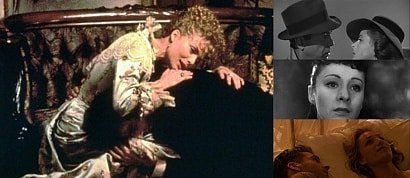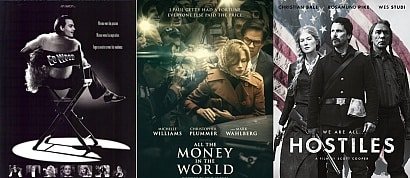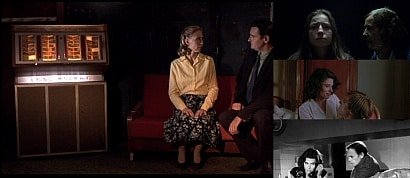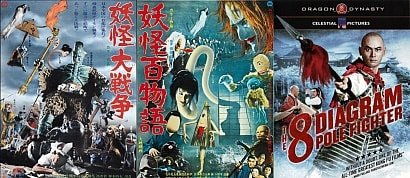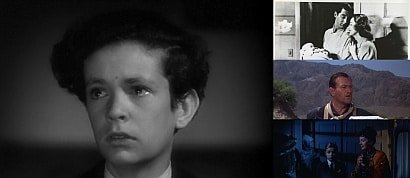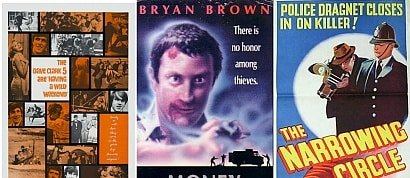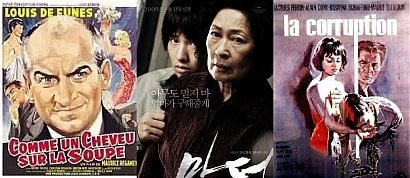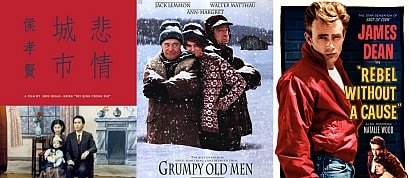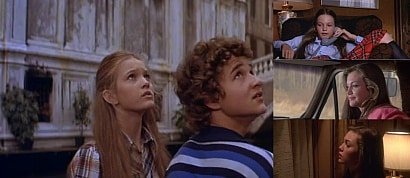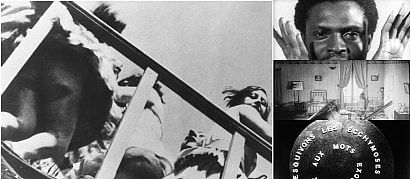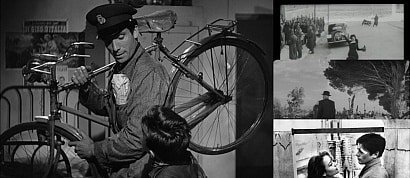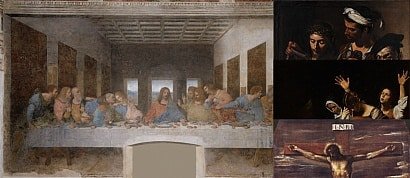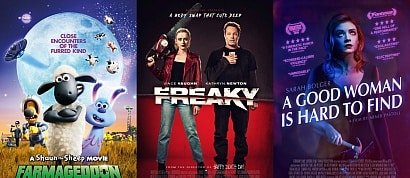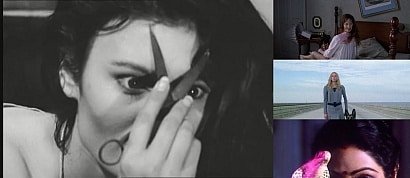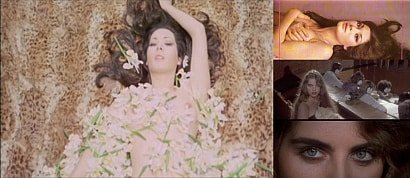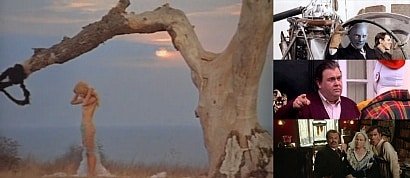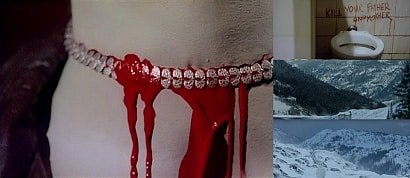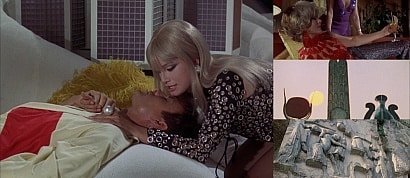11
2148 Views Share:
Retro Horror Movies, Bollywood Style ॐ
Movie list created by Severin Severin 
Sort by:
Showing 43 items
Decade:
Rating:
List Type:
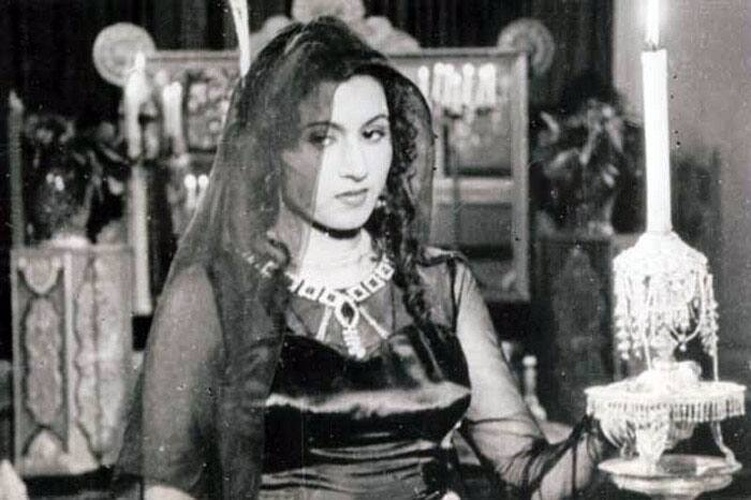


"Directed and scripted by Kamal Amrohi, the film is arguably the first significant Indian gothic. Despite subsequent imitations at regular intervals, it remains unsurpassed in the genre. Like the founding text of the English literary gothic, Horace Walpole’s The Castle of Otranto (1764), Mahal also foregrounds the space of a mansion/castle in its title. And it is the space (of the mansion) that triggers in the owner a desire to connect with a prior, repressed narrative. In the canonical literary Gothic (Walpole, Reeve, Radcliffe, etc.) the castle draws into its space the dominant figure of the ruthless father, the pliant woman, and the obedient mother. The reader also participates, vicariously, in the sexual transgressions that might take place in the mansion/castle.
As a nightmare house, the mansion/castle is a space of residual unconscious material in which sexual, genealogical, and psychological struggles will take place. But despite the threats that it poses on the subject, and the reader, the space of the mansion has this enormous power of attraction, drawing people inward into its mysteries, and keeping them there.
…Mahal is clearly the great precursor text of the Indian gothic. It remains the final achievement precisely because it lacks closure and has ambiguous moments built into its very structure. But what has interested me most here is the way in which the Indian gothic has internalized a colonial discourse by strategically incorporating into it elements from the vast tradition of Indian thought. The use of the Hindu theory of reincarnation in fact expands the capacities of the gothic form and ultimately connects it with an underlying impulse toward the sublime that characterizes Hindu aesthetic theories generally."
–Vijay Mishra, Bollywood Cinema: Temples of Desire
dhrupad.tumblr.com/post/94511719126/directed-and-scripted-by-kamal-amrohi-the-film-is
Gumnaam (1965)



The film is a loosely-inspired adaptation of the 1939 mystery novel And Then There Were None by Agatha Christie. It's best known for the catchy rock'n'roll song "Jaan Pechaan Ho," which was featured in the 2001 Hollywood film Ghost World:


After discovery of skeletal remains at an excavation site, a woman known to be deceased for over 2 centuries mysteriously re-surfaces to claim her lover.


The first in a long series of Indian B-Horror movies directed by the Ramsay Brothers.
"With just the right mix of gore, jump scares and sleaze (toned down for Indian theatres sans any nudity), these films became the regular go-to place for risqué entertainment...
The plots were uniformly similar in each of their films and the tropes which have now become almost synonymous with the Ramsays, easily identifiable — the eternal good vs bad struggle a healthy dose of black magic, abandoned dilapidated havelis, village graveyards, foggy nights, skimpily clad women and men with a savior complex bigger than Puneet Issar’s biceps and above all, of course, their own league of extraordinary monsters."
www.telegraphindia.com/entertainment/horror-gore-and-sleaze-the-universe-dominated-by-the-ramsay-brothers/cid/1717565
Nagin (1976)





Despite being a woman-centric film in macho Bollywood, Nagin was a blockbuster at the box office and the highest-grossing film of 1976. It was inspired by François Truffaut's French film The Bride Wore Black which was based on Cornell Woolrich's novel of the same name.
The song "Tere Sang Pyar Main" was played in the Hollywood movie Eternal Sunshine of the Spotless Mind when Clementine invites Joel to her apartment for a drink.
Severin Severin's rating:






"Through the 1970s and 1980s, the Ramsay Brothers forged a career in the lower reaches of the Bombay film industry, creating a niche market for their cheaply produced horror films. Despite drawing committed audiences in B- and C-centers, these films were dismissed by the urban English press as clumsy counterfeit versions of American and British products, and by the late 1990s a new school of practitioners led by Ram Gopal Varma had begun producing slick and songless horror films that could translate internationally.
Little is known of the Ramsays’ production and distribution practices, their frugal discipline, their internal star system, and their markets in India’s rural territories. It is perhaps perversely appropriate that the Ramsay Brothers rose to prominence in the 1970s, a time when the question of cinema—its politics, aesthetics, and status as “bad object”—returned to the fore in Bombay."
journals.sagepub.com/doi/abs/10.1177/097492761200300203?journalCode=bioa



Nagina (1986)



A year before starring in this film, lead actress Sridevi had said: ‘I dream a lot, every night in fact. Most of the time I dream of horrible things like ghosts, phantoms and snakes. People tell me that dreaming of snakes means that you have a lot of enemies.’ In the movie, she plays a shape-shifting cobra woman.
The film is best known for this lit snake-charming dance sequence/song:
Severin Severin's rating:


Veerana (1988)




"Speaking of modernity fears, state censorship came down unevenly once popularity raised the Ramsays’ profile, and especially hard on Veerana (1988), coincidentally the only Ramsay film with a female monster, a churel, who lures men sexually before slaying them. For movies accused of scandalous sexuality, Gangu’s camera certainly lingers on its female leads, but they also shower with bathing suits on.
The horny teens of American slashers can’t exist in India—youths are constantly going to, living with, and are surrounded by, their extended family. In another convention confusing to Americans, the emotional focus in Ramsay (and many Bollywood) films isn’t on the individual per se, but the family, and that is what monsters threaten—family potential for continued growth and happiness. When lovers finally unite, it’s usually at the altar, with a proud papa or uncle hovering nearby to sanction it."
mubi.com/notebook/posts/blood-brothers-the-ramsay-film-history



The film's funky disco soundtrack is composed by Bappi Lahiri, the Giorgio Moroder of India.
Severin Severin's rating:






"Outside India, the Ramsays seem critically unknown. Despite breaking ground in a cult genre, no New York film buff I asked had ever heard of them. It’s not too surprising considering the Ramsays occupy a cinematic blind spot in their own country. Industry outsiders lacking the influence and resources of bigger studios, whose films were too populist (and formulaic) to ever be critical darlings, the Ramsays were dismissed as background schlock for canoodling couples, not film history.
Their movies lifted directly from Indian and European formulas, applying genre-blending masala conventions to Hammer horror tropes with a workmanlike approach prioritizing efficiency over artistry.
The films definitely show their age (though the period-specific clothing and music is part of their charm) and modern viewers might wonder how anyone was ever scared by clearly telegraphed monster appearances with musical interludes. But despite recycled effects, predictable plots, and plenty of “day-for-night” photography that looks like it's 2:30 PM, there’s something endearing about these movies.
If horror is where a culture’s id runs rampant, the Ramsays captured the fears and fantasies of a recently secularized country grappling with its ancient past, colonial legacy, and Westernized ideas of modernity during a turbulent era."
mubi.com/notebook/posts/blood-brothers-the-ramsay-film-history




Bandh Darwaza (1990)





"Lifting Western horror conventions, the brothers would occasionally replace Christianity with Hindu trappings, but really, any religion would do—Bandh Darwaza/ Closed Door (1990) is closest to a Hammer Dracula film, but in one ridiculous scene the vampire is repelled in rapid succession by a Koran, cross, Om, and finally Shiva’s trident.
The Ramsay Brothers' monsters were created by British prosthetic artist Christopher Tucker, the genius who transformed John Hurt in The Elephant Man (1980) and created The Company of Wolves’ (1984)."
mubi.com/notebook/posts/blood-brothers-the-ramsay-film-history
Shaitani Ilaaka (1990)
Junoon (1992)

A pretty shitty looking rip-off of Cat People (1982), featuring the worst man in a tiger costume makeup ever:

Raaz (2002)





"Raaz is one of the rare Bollywood ventures into horror cinema. Bollywood is often blatantly imitative of Western films and will happily steal entire plots outright. Raaz has been fairly much stolen directly from What Lies Beneath (2000) – it features an identical plot about a wife believing that she is being haunted and then finding her husband has been having an affair with the dead woman.
As a horror film, Raaz is down about the level of a cheap mid-1980s American video release... At face value, the idea of a horror movie with songs seems an odd one... There is one particularly haunting and sensual scene where the husband is tempted by the surreal image of Malina Sharma appearing by the roadside and drifting through the trees playing a violin, which leads into a beautifully eerie song in a minor key."
www.moriareviews.com/horror/raaz-2002.htm
Also. Bipasha Basu is so beautiful in this movie:



Severin Severin's rating:


1920 (2008)



Allerton Castle in North Yorkshire is the Gothic mansion shown in the film and it is believed to be haunted in real life.
Hisss (2010)



Director Jennifer Lynch (daughter of David Lynch) disowned the film after it was 'taken away' from her in the editing stages; according to her the film that she perceived and wanted to be made as a love story eventually took the shape of a horror film after the producers took creative control of it.
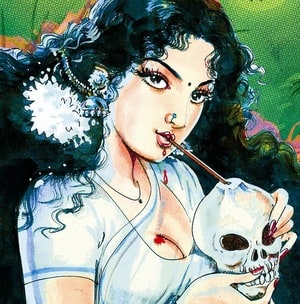
Indian horror films are scarce, but the ones that do exist are fascinating in both good and bad ways. In the 1970s and 80s, Bollywood horror was dominated by a family of directors named the Ramsay Brothers. They churned out cheesy schlock B-movies at a steady pace, and many of their films are visually stunning and have a certain low budget charm to them. This list covers their most famous flicks, as well as other notable entries into the Indian horror canon. Also there's some lurid posters and gifs I couldn't resist including, featuring D- movies of questionable quality.
Added to
People who voted for this also voted for
Films: The Unattainable Woman
My trips to the cinema 2018
Darth Brutus's Baadasssss Film Diary for 2021
Movies watched in 2023
Watched in 2023
Adoption - Movies
Seen in 2021
A New Decade! A New Year! Movies Watched In 2020
Movies watched in 2021
Watched in 2020
Diane Lane’s Movies
Favorite Shorts Films
The best films produced in Italy
Paintings of Jesus Christ
Watched In 2021
More lists from Severin Severin
possessed girls
actors who regularly starred in giallo films
my 2021 movie diary ✿
my painful to read 2019 movie diary
my 2020 movie diary ♥
Psychedelic Swingin' 60s & 70s Film
Vintage South Asian + Middle Eastern Actresses ✿
 Login
Login
 12
12
 5.3
5.3
 7.2
7.2

























































































































